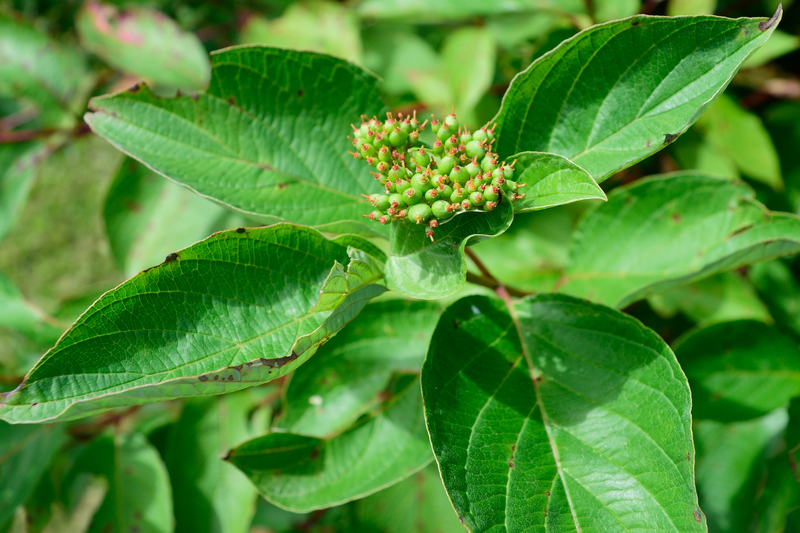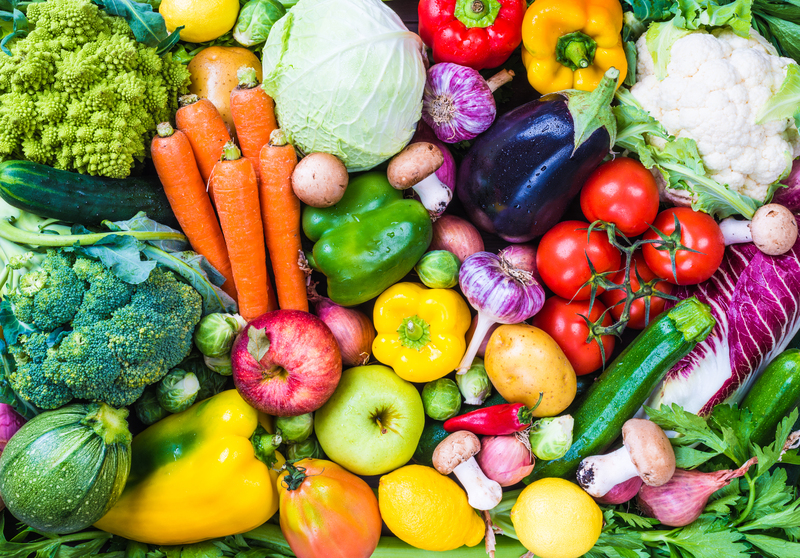Create an Enchanting Herb Garden That Thrives
Posted on 26/06/2025
Create an Enchanting Herb Garden That Thrives
Are you dreaming of a lush, fragrant haven just outside your door? Imagine plucking vibrant basil, cooling mint, or soothing lavender right from your own enchanting herb garden--a living retreat bursting with flavor and aroma. Whether you're a seasoned gardener or a total beginner, creating an herb garden that truly thrives is both rewarding and remarkably achievable. In this comprehensive guide, you'll find everything you need to design, plant, and maintain the flourishing herb garden of your dreams.

Why Start a Magical Herb Garden?
Herb gardening offers a multitude of benefits beyond delicious culinary rewards. A thriving herb garden:
- Enhances Your Cooking: Fresh herbs uplift the flavors of everything from salads to stews.
- Beautifies Your Space: Herbs come in a variety of shapes, colors, and fragrances, doubling as landscaping elements.
- Supports Pollinators: Blossoming herbs attract bees and butterflies, supporting your local ecosystem.
- Improves Wellbeing: Tending your personal herb garden connects you to nature, reduces stress, and lifts your mood.
- Reduces Waste: Snip off only what you need, bidding farewell to wilted store-bought herbs.
Plan Your Thriving Herb Garden
Choosing the Right Location
Selecting the perfect spot is the first step towards a successful herb garden. Most herbs crave sunlight, so aim for a location that receives at least six hours of direct sunlight daily. A south-facing plot is ideal. If outdoor space is limited, don't worry--container herb gardens or windowsill setups can be equally enchanting and productive.
Consider the following factors when planning where to plant your herbs:
- Sunlight: Herbs like rosemary, sage, oregano, and thyme thrive in full sun. Shade-tolerant options include parsley, mint, and chives.
- Accessibility: Keep the garden close to your kitchen for effortless harvesting.
- Drainage: Herbs dislike wet feet. If your soil tends to retain water, consider raised beds or containers.
Designing for Beauty and Function
To create a stunning herb garden, blend practicality with visual appeal. Traditional designs include:
- Formal Knot Gardens: Symmetrical, patterned herb beds outlined with low boxwoods or thyme.
- Cottage Garden Style: Herbs interplanted informally amid vegetables and flowers for a wild, enchanting look.
- Pots and Containers: Terracotta pots, wooden crates, or repurposed vessels add character and flexibility.
Tip: Plan pathways or stepping stones for easy access and to prevent compacted soil around your delicate herbs.
Selecting the Best Herbs for Your Enchanted Garden
A flourishing herb garden starts with the right plant choices. Consider your local climate, available sunlight, and your culinary preferences when choosing herbs. Here are some popular options for a thriving herb oasis:
Classic Culinary Herbs
- Basil: Sun-loving and available in many varieties (from sweet basil to purple opal), basil is a kitchen essential, especially during summer.
- Parsley: A biennial herb thriving in partial shade, perfect for salads and garnishes.
- Rosemary: Woody, aromatic, and resilient, rosemary enjoys dry, well-drained soil.
- Thyme: Spreading, low-maintenance, and ideal for garden edges or containers.
- Oregano: Perfect for Mediterranean dishes, this perennial tolerates drought once established.
- Chives: Mild, onion-flavored stalks with cheerful purple flowers.
- Cilantro/Coriander: Grows best in cool weather; both leaves and seeds are edible.
Enchanting Scented and Medicinal Herbs
- Lavender: Well-known for its calming scent and beautiful purple blooms.
- Lemon Balm: A gentle, lemony herb, great for teas and calming tinctures.
- Mint: Refreshing, but best grown in containers--it can be invasive.
- Sage: Adds an earthy flavor to dishes and lovely gray-green foliage to your garden.
- Chamomile: Used for herbal teas, its daisy-like flowers add charm to beds and borders.
Getting Started: Prepare the Perfect Soil for Your Herb Garden
Healthy soil is the foundation for a flourishing herb garden. Most herbs desire loose, well-drained soil with a slightly alkaline pH. Before planting:
- Test Your Soil: Use a soil test kit to check pH (aim for 6.0-7.5) and nutrient levels.
- Add Organic Matter: Mix in compost or well-rotted manure to enrich the soil and improve drainage.
- Avoid Heavy Fertilizers: Herbs prefer modest fertility. Over-fertilizing can lead to lush leaves with reduced flavor!
- Mulch: A layer of straw, bark, or gravel helps retain moisture, suppress weeds, and adds a tidy, enchanting look.
Planting Your Enchanting Herb Sanctuary
Seeds, Seedlings, or Cuttings?
Herbs are easy to start from seeds, but beginners may find it easier to plant young transplants from the nursery. Some, like mint and rosemary, also propagate readily from cuttings. Here's a quick guide:
- Seeds: Basil, coriander, dill, and parsley grow well from seeds sown directly in the garden after your last frost.
- Seedlings: Purchase young plants of slower-growing or fussier varieties, such as rosemary or thyme.
- Cuttings: Take a 4-inch cutting from a healthy plant (rosemary, mint, oregano), remove the bottom leaves, and root in water or moist soil.
Planting Step-by-Step
- Space Wisely: Check mature size for each herb and provide adequate room for air circulation (typically 6-18 inches apart).
- Plant at the Right Depth: Place seeds and transplants at the same depth as in their pots or seed packets.
- Water Gently: Moisten the soil after planting and avoid washing away seeds or seedlings.
- Label Your Herbs: Use attractive markers to avoid confusion--especially in the early stages.
Insider Tip: Arrange herbs by height, with taller ones like rosemary or sage at the back, and creepers like thyme at the front for a layered, alluring display.
Caring for Your Thriving Herb Garden
Watering Needs for Vibrant Growth
Herbs generally prefer even moisture without sogginess. Most require about 1 inch of water per week (including rainfall). Container gardens dry out more quickly; check the soil by sticking a finger an inch down--if dry, water deeply. Water early in the day to prevent disease, and avoid splashing leaves if possible.
Feeding and Mulching
- Modest Fertilization: Herbs typically need little feeding. Apply diluted organic fertilizer or compost tea every few weeks during the growing season for a gentle boost.
- Mulch Wisely: Keep mulch a few inches away from herb stems to prevent rot, and select organic materials to attract beneficial insects.
Pruning for Health and Abundance
Pruning is essential for a lush, productive herb garden. Regular harvesting encourages bushing and fresh growth. Pinch back soft-tissue herbs like basil or mint before they flower for the best flavor. Trim woody perennials like rosemary and sage in spring, removing dead tips and shaping the plant.
Protecting and Maintaining Your Magnificent Herb Haven
Pests and Natural Solutions
An organic, thriving herb garden can still encounter pests. Common culprits include aphids, slugs, and spider mites. Avoid harsh chemicals; instead, try these gentle, eco-friendly solutions:
- Handpicking: Remove pests manually for small infestations.
- Attract Beneficial Insects: Ladybugs, lacewings, and hoverflies feast on aphids and other pests.
- Neem Oil or Insecticidal Soap: Use for persistent problems, carefully following label instructions.
- Companion Planting: Marigolds, nasturtiums, and borage can help deter unwanted visitors.
Disease Prevention
To maintain a flourishing herb garden, ensure:
- Good Air Circulation: Space plants to minimize humidity and disease risk.
- Clean Tools: Disinfect with alcohol or soap to prevent spreading fungus or bacteria.
- Prompt Removal: Uproot diseased plants immediately to prevent infection.
Harvesting and Preserving the Magic
How to Harvest Herbs for Maximum Flavor
Harvest herbs in the morning when their essential oils are most concentrated. Use sharp scissors or pruners to avoid bruising, and never take more than one third of a plant at a time--you want it to keep producing!
- Leafy Herbs: Pick basil, cilantro, and mint leaves before flowers appear for best taste.
- Woody Herbs: Trim sprigs of rosemary, sage, and thyme as needed.
- Flowering Herbs: Snip chamomile, lavender, or calendula as blossoms fully open.
Preserving Your Harvest
- Air Drying: Bundle and hang stems upside-down in a dark, airy space.
- Freezing: Chop and freeze herbs in olive oil in ice cube trays for instant flavor bursts.
- Herb Butters or Vinegars: Mix finely chopped herbs into softened butter or apple cider vinegar for gourmet gifts and flavors year-round.
Inspiring Ideas to Make Your Herb Garden Truly Enchanted
Create a magical atmosphere in your herb garden sanctuary with creative additions and thoughtful design. Consider:
- Wind Chimes or Water Features: Add soothing soundscapes for a tranquil escape.
- Fairy Lights or Lanterns: Extend enjoyment into the evening hours with gentle, magical lighting.
- Decorative Markers: Paint wooden spoons, stones, or terracotta stakes for personalized plant IDs.
- Seating Area: Install a rustic bench or bistro table amid your herbs for relaxation or entertaining guests.
- Edging and Borders: Use creeping thyme, low boxwood, or even shells and stones to frame beds elegantly.

Troubleshooting Common Herb Garden Challenges
- Yellowing Leaves: May signal overwatering or poor drainage. Amend soil or adjust watering habits.
- Leggy Growth: Indicates insufficient light or infrequent harvesting. Relocate or cut herbs back to encourage bushiness.
- Poor Flavor: Over-fertilization can mute flavors. Use organic, low-strength feeds if needed.
- Bolting (Going to Seed): Happens during hot weather--harvest regularly and choose bolt-resistant varieties when possible.
Conclusion: Let Your Herb Garden Burst with Life
Creating an enchanting herb garden that thrives is a journey filled with discovery, flavor, and delight. By selecting the right spot, nurturing your soil, choosing the best herbs for your climate, and caring for your plants with love and attention, you'll not only enjoy abundant harvests, but also cultivate a living sanctuary for the senses. Whether you plant basil on your windowsill, rosemary in raised beds, or a collection of magical mints in containers, let your herb garden become a cherished retreat--one that draws you back each day with beauty, scent, and the promise of a flourishing, thriving life.
Now is the time--roll up your sleeves and let your own herb garden enchantment begin!





